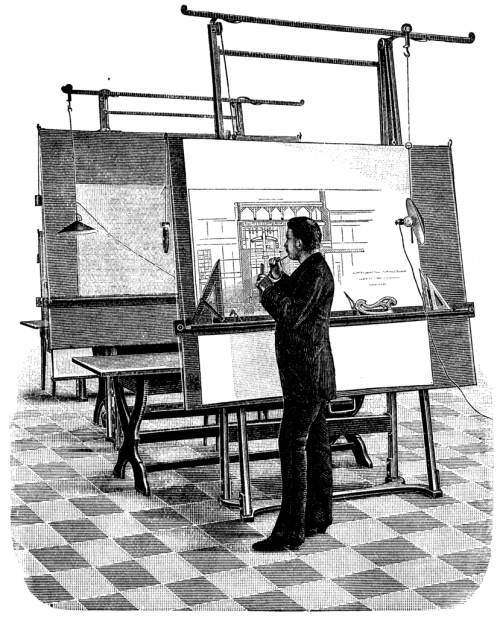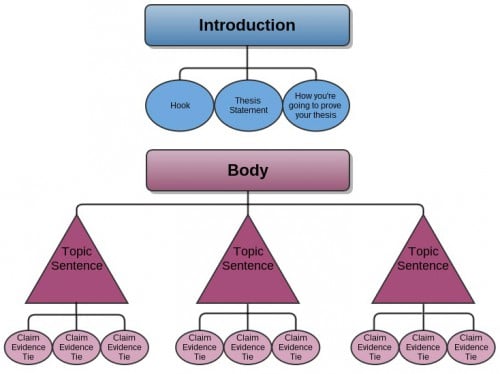You’ve been staring at your blank computer screen for what feels like hours, trying to figure out how to start your analytical essay. You try to choose between writing the introduction first or getting right into the meat of it. But somehow, it seems too difficult to do either.
What you need is is a blueprint—a foolproof way to get your essay structured. Then all you have to do is fill in the blanks.

What an Analytical Essay Is—And What It Isn’t
Before we get to the good stuff, you should know exactly what an analytical essay is. Your middle school and high school teachers probably told you something like, “An analytical essay is writing that analyzes a text.”
Helpful, right? Um, not so much.
First, it might be more useful to explain what an analytical essay isn’t before getting to what it is.
An analytical essay isn’t a summary. Though this may seem obvious in theory, it’s more difficult in practice. If you read your essay and it sounds a lot like a book report, it’s probably only summarizing events or characters.
One way to figure out if you’re summarizing instead of analyzing is to look at your support. Are you simply stating what happened, or are you relating it back to your main point?
Okay, so what is an analytical essay, exactly?
Usually, it’s writing that has a more narrowed focus than a summary. Analytical essays usually concentrate on how the book or poem was written—for example, how certain themes present themselves in the story, or how the use of metaphor brings a certain meaning to a poem.
In short, this type of essay requires you to look at the smaller parts of the work to help shed light on the larger picture.
An example of a prompt—and the example I’m going to use for the rest of this post—could be something like: Analyze the theme of sacrifice in the Harry Potter series. (Note: there might be some spoilers, but I figured everyone who was planning on reading the books has done so already—or at least has seen the movies.)
One Way To Form Your Analytical Essay Outline
There are quite a few ways to organize your analytical essay, but no matter how you choose to write it, your essay should always have three main parts:
- Introduction
- Body
- Conclusion
I’ll get into the nitty-gritty of this soon, but for all you visual learners, here is a nice representation of all the components that make a great analytical essay outline.

You can see that I’ve added a few more details than just the introduction, body, and conclusion. But hold your horses—we’re getting to those parts right now.
Introduction of Your Analytical Essay Outline
 The purpose of your introduction is to get the reader interested in your analysis. The introduction should include at least three things—a hook, your thesis statement, and a sentence or two describing how you intend to prove your thesis statement.
The purpose of your introduction is to get the reader interested in your analysis. The introduction should include at least three things—a hook, your thesis statement, and a sentence or two describing how you intend to prove your thesis statement.
1. You gotta hook ‘em from the start. The first part of your introduction should draw the reader in. This is called the hook.
The hook should be interesting or surprising. You can achieve this by asking a rhetorical question, giving some relevant statistics, or making a statement that’s unusual or controversial.
For my Harry Potter example, I might say, “Since the publication of the first book in the Harry Potter series, Harry Potter and the Philosopher’s Stone, some Christian groups have attacked the books for promoting witchcraft. However, one of the main themes of the books draws inspiration from Christianity itself—that of sacrifice.”
Okay, so that’s two sentences. But it’s got a little bit of controversy and relates to what the rest of the essay will discuss.
2. Get to the good stuff—write a killer thesis statement. Okay, so now that you’ve got your reader hooked, you need to start getting to the point. This is where the thesis statement comes in.
My thesis might be, “The theme of sacrifice is prevalent throughout the series and is embodied as sacrifice for the greater good, sacrifice for an ultimate gain, and sacrifice to keep a promise.”
3. It’s time to back up your thesis. Let the reader know how you’re going to prove your claim.
For my example, I would let the reader know that I intend to analyze the instances of Harry’s “death,” Voldemort’s sacrifice of his soul in exchange for immortality, and how Snape sacrifices in order to honor a promise made to Lily Potter.
These points will be the building blocks of the body paragraphs.
Body of Your Analytical Essay Outline
 The body is where you can start to get really creative and play around with formatting.
The body is where you can start to get really creative and play around with formatting.
In the flowchart, there are three body paragraphs. But that’s because I was trained in the 5-paragraph outline. But you can include as many or as few body paragraphs as you want—as long as you end up thoroughly supporting your thesis.
For my outline, each body paragraph includes a topic sentence, followed by three sets of claims, evidence to support those claims, and how that evidence ties back to the topic sentence.
Again, three is not necessarily a magic number here. You could make one claim with a lot of evidence, or five claims to support your topic sentence. But let’s get into it, shall we?
1. Develop a strong topic sentence. Each topic sentence in each body paragraph of your analytical essay outline should tell the reader exactly what that section is going to be about.
My first body paragraph might start with, “Harry Potter is willing to fulfill prophecy and make the ultimate sacrifice—that of his life—in order to save the rest of the wizarding world.”
2. Make your claim. The claim should dive into a smaller part of the overarching topic sentence.
The topic sentence I gave can be broken down into several smaller claims—that Harry knew that he was fulfilling prophecy, that he was actually willing to die, and that his death would be of profound significance.
3. Provide evidence from the text to back your claim. You can’t just go around making claims without any support. You can use quotes or paraphrase parts of the text to add evidence.
For evidence that Harry knew that he was fulfilling prophecy, you could cite the instance in the hall of prophecies with the quote, “and either must die at the hand of the other for neither can live while the other survives.”
4. Tie that evidence to the topic sentence. You have to make it absolutely clear why you included the evidence. If you don’t, your analytical essay runs the risk of being a summary.
For example, with the citing of the prophecy, I would tell the reader that Harry and his friends found said prophecy and figured out that it had to be about him (although there are objections that it could’ve been referring to Neville, but we’ll leave that out of this example). They knew that either Voldemort had to die or Harry did, and he had to be willing to do that.
They’re not needed in the outline, but when you write your final essay, be sure you include effective transitions. This will help your essay flow.
Conclusion of Your Analytical Essay Outline
 After you’ve built up all of your body paragraphs, given the appropriate evidence to back your claims, and tied that evidence to your awesome topic sentences, you’re ready to wrap it all up.
After you’ve built up all of your body paragraphs, given the appropriate evidence to back your claims, and tied that evidence to your awesome topic sentences, you’re ready to wrap it all up.
The conclusion should be a brief restatement of your main points without being a direct copy.
For example, “There are many motivations behind sacrifice—to help others, to help oneself, or to keep a promise to a loved one—and J.K. Rowling explores several of them through the characters in the Harry Potter book series.”
This, of course, does not suffice as a full conclusion. To fill it out and give the reader a sense of closure, you can relate the theme to the real world or end with a final quote from the text or the author.
Use This Downloadable Analytical Essay Outline as a Guide
Easy, right? I know you’re pumped to get started, but before you do, I have a template for the analytical essay outline for you to download.
Download the Analytical Essay Outline Template PDF
Download the Analytical Essay Outline Template (.doc)
Of course, your instructor’s directions will trump mine, so if they say to do something a specific way, I won’t be offended if you take their advice over mine.
Need more help? Check out these analytical essay examples.
And don’t forget about the Kibin editors. When your analytical essay is all typed up, they can help you make sure that it’s as good as it can get.
Now… get to it!
